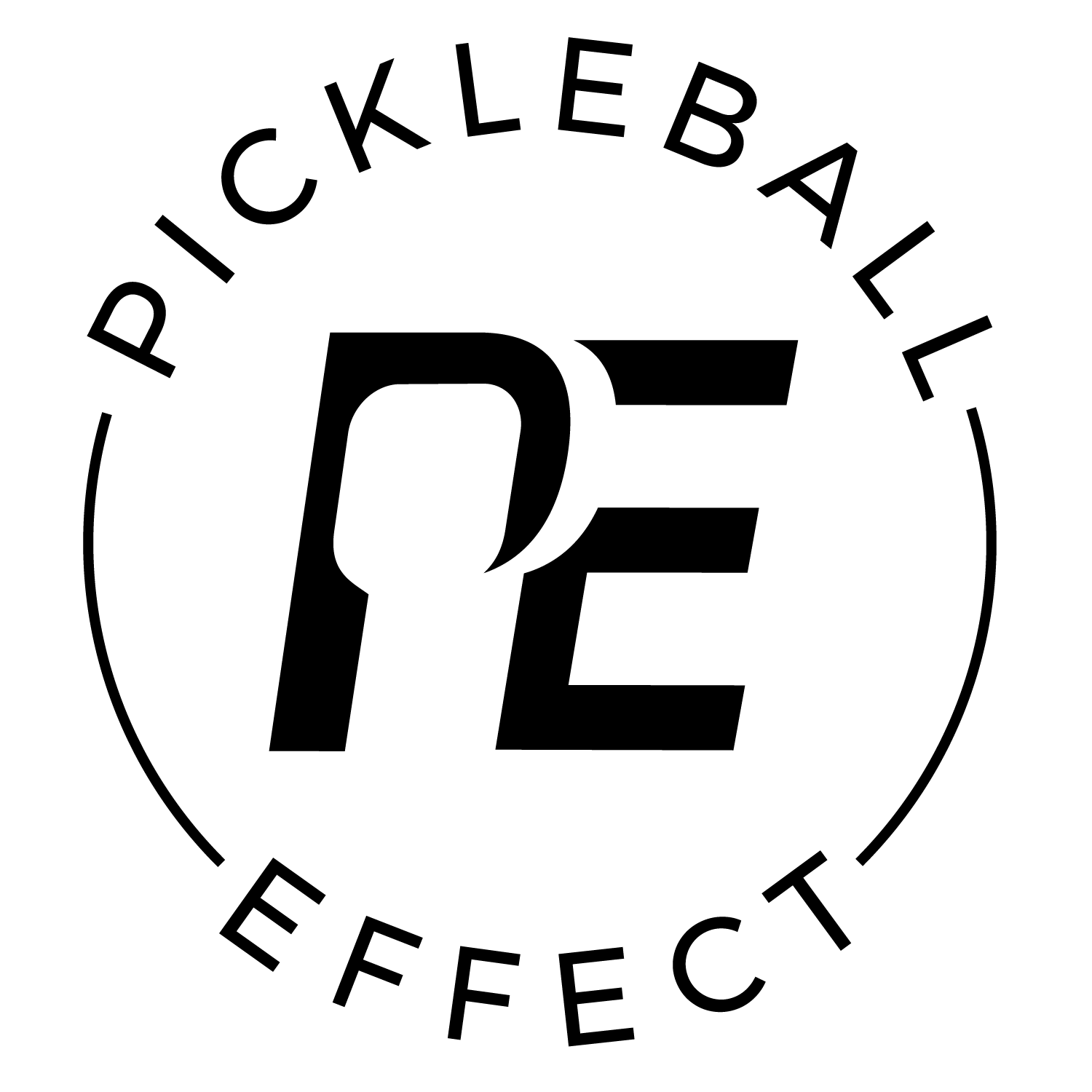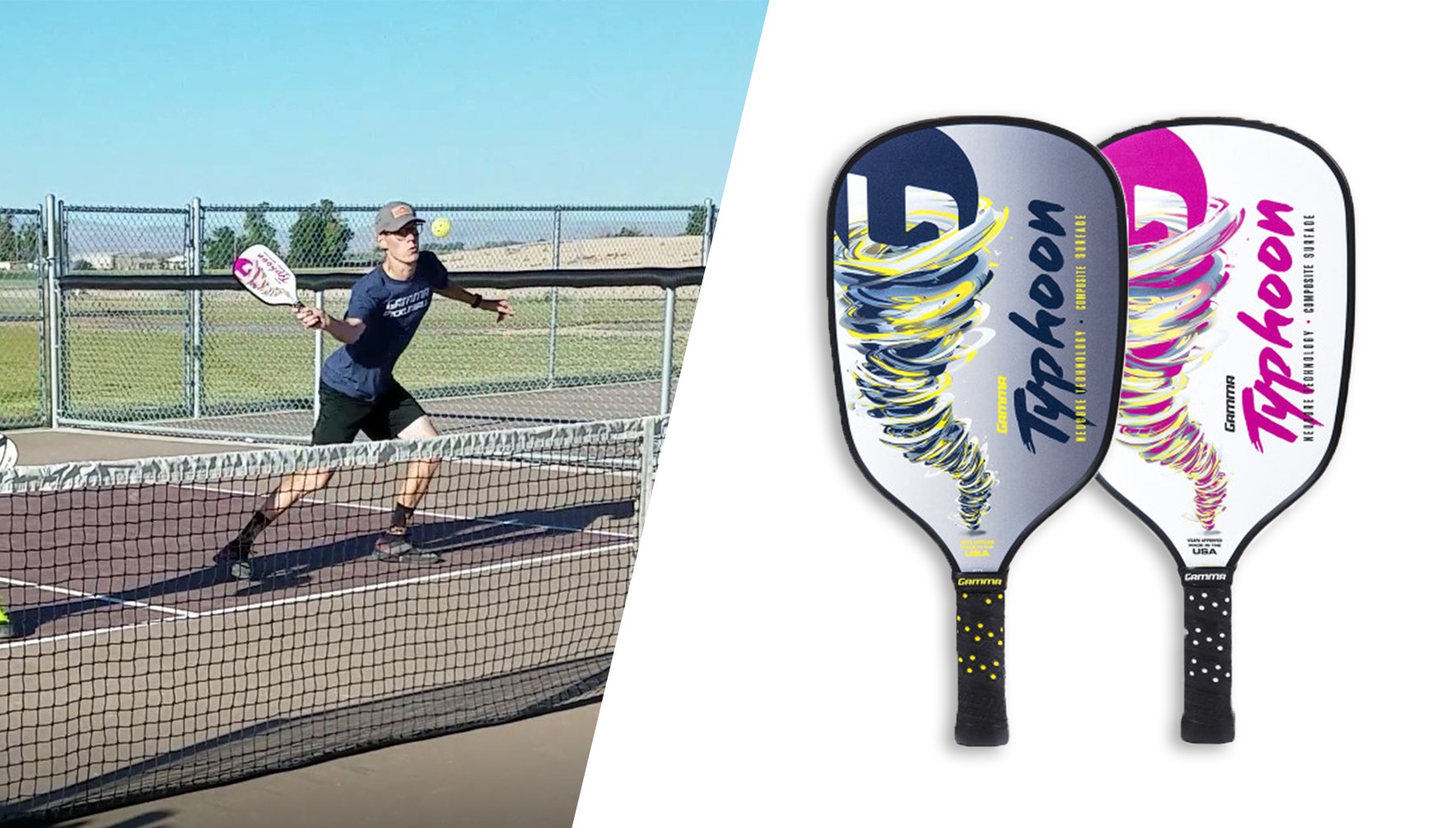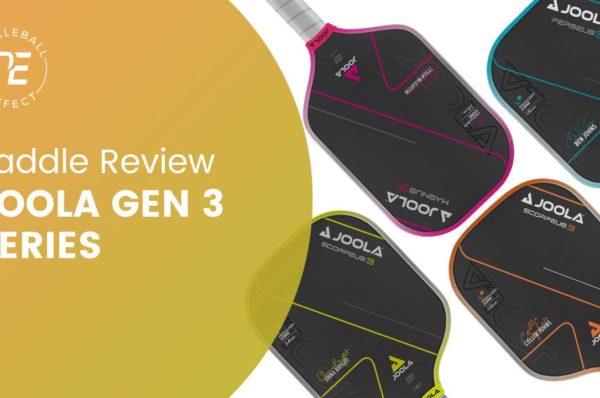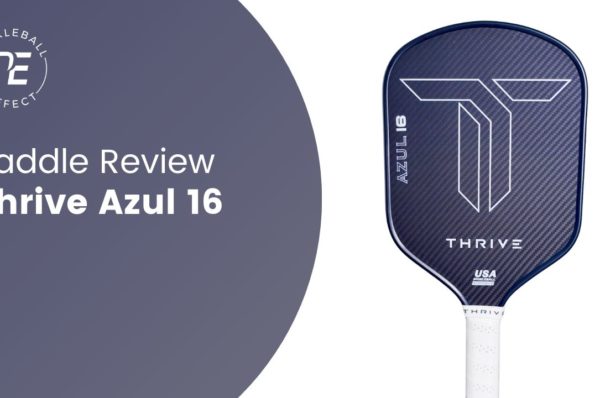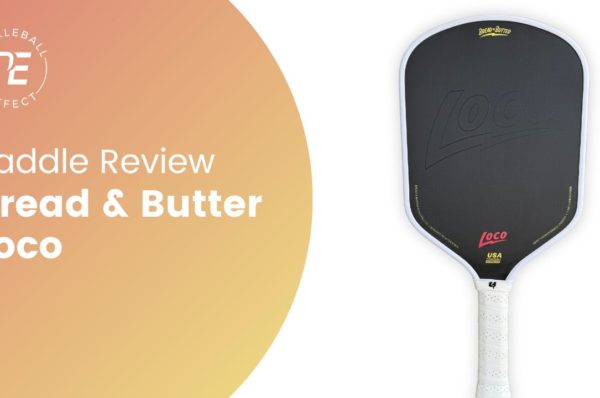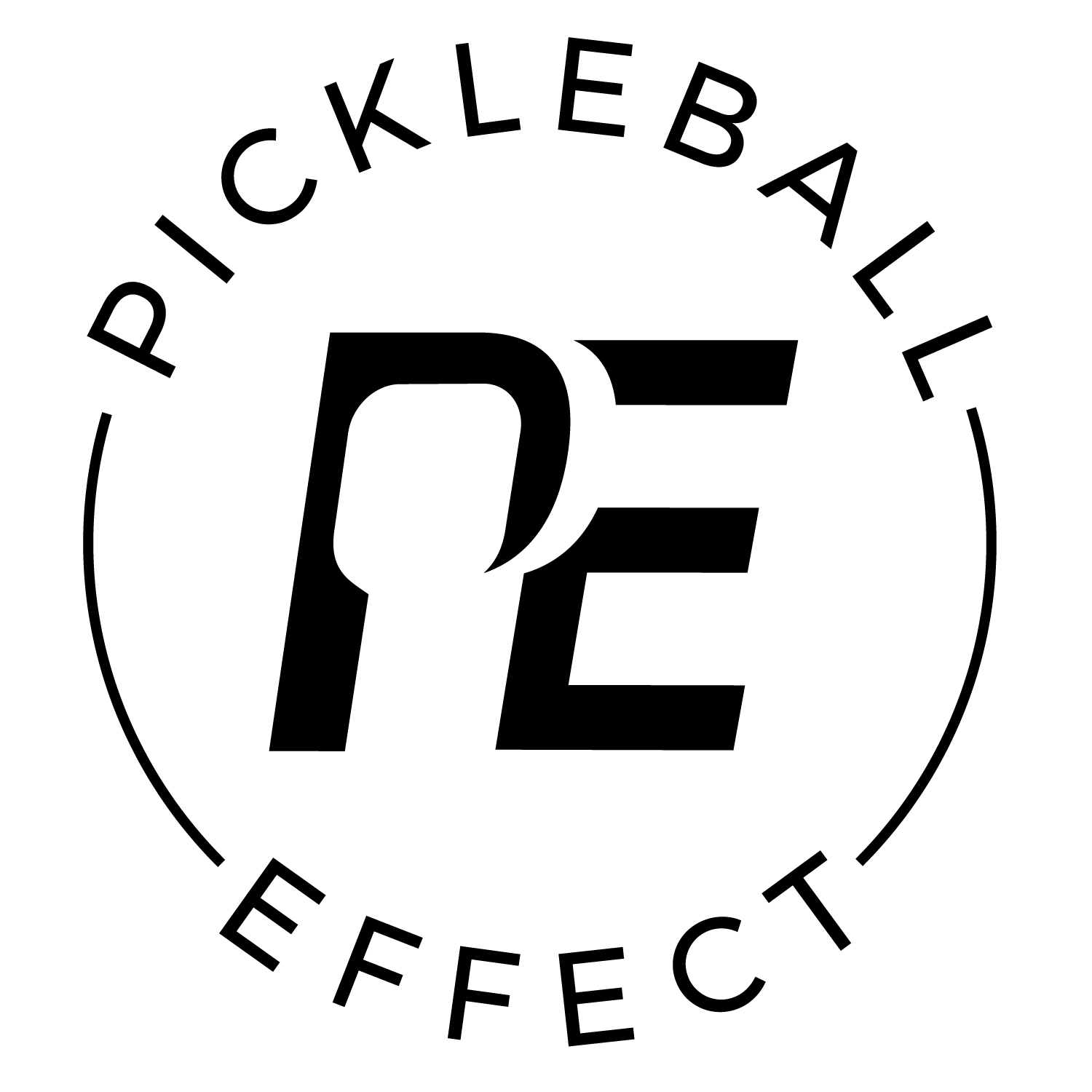Gamma Pickleball continues to impress me. Every time I play with their latest paddle, it becomes my new favorite Gamma paddle. I love that Gamma‘s research and development team is not afraid to break the mold and try new things, and they’ve found something special in the Typhoon.
The Typhoon follows Gamma’s recent release of the Hellbender. The Hellbender pioneered their unique teardrop shape that gives you extra reach (16 1/8″) but still maintains a large sweet spot unlike most other elongated paddles on the market. Though the Typhoon and the Hellbender share the same shape, the Hellbender was designed to give you great control and quickness while the Typhoon was designed to bring some power to your game.
After drilling and playing over 20 games with Gamma’s new Typhoon paddle, I’m excited to share my review of its performance.
The Core and Paddle Design
Shape and Design
The Typhoon is 16-1/8 inches long, 7-5/8 inches wide and has a teardrop shape. This design is not as long as a typical elongated paddle (16.5″) but is longer than your standard widebody design. This hybrid length and width combined with its unique teardrop shape gives you some extra reach but not at the sacrifice of shrinking the size of the sweet spot.
It has a short handle length of 4-1/2 inches. I play a two-handed backhand drive so it felt uncomfortable to me in that scenario. I don’t play any other two handed shots, so the handle length didn’t bother me outside of that. 60% of players only use one hand, so that shouldn’t be an issue for most players.
It weighs in at 7.75 oz, which would make it a midweight paddle. It weighs .15oz more than the Hellbender but carries the extra weight in the head of the paddle so it feels like it should weigh more than what it’s listed. The extra weight made a noticeable difference in added power. The paddle weight carried through the ball well in a way the Hellbender didn’t.
Materials
The Typhoon has a lightly textured fiberglass facing material. Fiberglass gives you more power than a carbon fiber facing material (which the Hellbender has) but usually at the sacrifice of some control. Fiberglass faced paddles typically have a bounciness to them that gives you extra power but makes them more difficult to develop a good sense of touch and control. However, the Typhoon didn’t have that bounciness feeling. The ball definitely came of the face with plenty of speed, but the absence of that bounce made it easier to control for a power paddle. More on this later in my description of the soft game further down in my review.
It has a thick 16 mm polymer core. Gamma has developed their own polymer core they call NeuCore. NeuCore is essentially just thicker honeycomb cells. I found that their core technology gave the paddle a little more pop when compared to other thicker core paddles I’ve played.
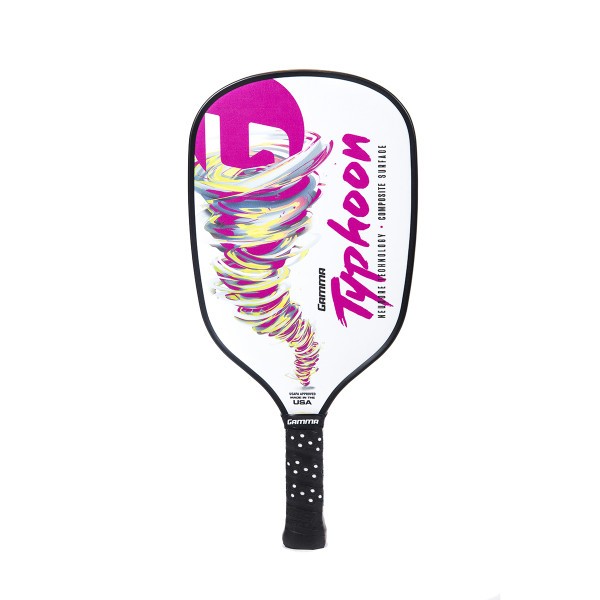
Quick Stats
Shop Our Top Rated Paddles
We've reviewed a lot of paddles but we don't sell every paddle we review. Shop our selection of top rated paddles. Free shipping and returns.
Shop NowAttacking
The first thing you notice with this paddle (especially compared to the Hellbender) is the easy power you can generate with it. The extra weight they added to the Typhoon lives in the head and gives you the paddle weight to carry through the ball and awards you with a nice solid feel. Combining that with the fiberglass face made the paddle very responsive when you would swing harder, it gave back everything I would put into my swing. Though the extra weight was carried in the head, it wasn’t too much weight where the paddle felt unbalanced in your hands.
My serves and return of serves really benefitted from the paddle’s extra power too. My ball on those shots seemed to be hit heavier and traveled deeper into the court, even on windy days. I really enjoyed that.
Whenever I was given a free license to swing while at the net, the ball came off hot and didn’t come back as often. It was nice to be able to put more balls away and win points after earning a pop up from your opponent.
I was hitting effective drives with my forehand. The pop and spin enabled me to keep the ball low and put pressure on my opponents that way. The shorter handle made it uncomfortable to play any two-handed shots, though. I play a two-handed backhand drive so I didn’t like the shorter handle in that scenario, other than that, the shorter handle didn’t bother me. If you only play with one hand then that’s not an issue.
I will say I didn’t feel like I could generate as much spin with the Typhoon as the Hellbender, I wonder if it might of been because of the extra weight that may have slowed my topspin or underspin movements a little.
Overall, the extra power was a welcomed addition and benefitted nearly all areas of attacking the ball.
Soft Game and Defense
Gamma boasts that the Typhoon has a large sweet spot, though I wasn’t sure it was going to be true since most fiberglass faced materials have a smaller sweet spot, but it turned out that the paddle played very forgivingly. It wasn’t quite as forgiving as the Hellbender, but it was close and big step ahead of other power paddles on the market.
Nearly every other fiberglass paddle I’ve hit has this bounciness to it that is hard to control, but the Typhoon wasn’t that way. It had a very consistent and solid feel to it that made it easier to control compared to other power focused paddles with fiberglass faces. I was pleasantly surprised with the control I developed with my dinks, drop shots, and resets. I will say that I felt more connected to the Hellbender and had a better feel for the soft game with it, but the Typhoon wasn’t far off.
I always felt like I was in complete control of the ball. The touch was there when I needed to play a defensive lift dink without popping it up and I could control the pace and trajectory well when I was being more aggressive with push dinks.
Hitting effective drop shots from the baseline and transition zone came quickly. If I did catch a drop shot off-center, the ball still came off the face well and would often stay in play.
Blocking drives and speed-ups at the net was easy with this paddle. Because the paddle was so forgiving I just had to get the paddle in the way and it did the rest.
I do want to note that the way I could control the ball with the Typhoon was not the case for everyone. Players who haven’t developed a strong sense of touch would sometimes overpower the ball and hit it too long or would unintentionally pop up the ball more often at the net. The more you play with it the better your feel gets with it, it just took more time for less advanced players to adjust.
Who would like this paddle?
I’d recommend the Typhoon to players who are looking for that extra 20% of power in their game, this paddle will deliver. Its unique shape gives you some reach but still plays with a large sweet spot. It also has a consistent feel across the face that allows you to maintain a strong soft game, unlike most other fiberglass faced paddles. However, if you don’t feel confident in your soft game then the extra power is difficult to adjust to. In that case, I’d recommend the Hellbender because you feel more connected to it than the Typhoon which makes it easier to develop a soft game with.
